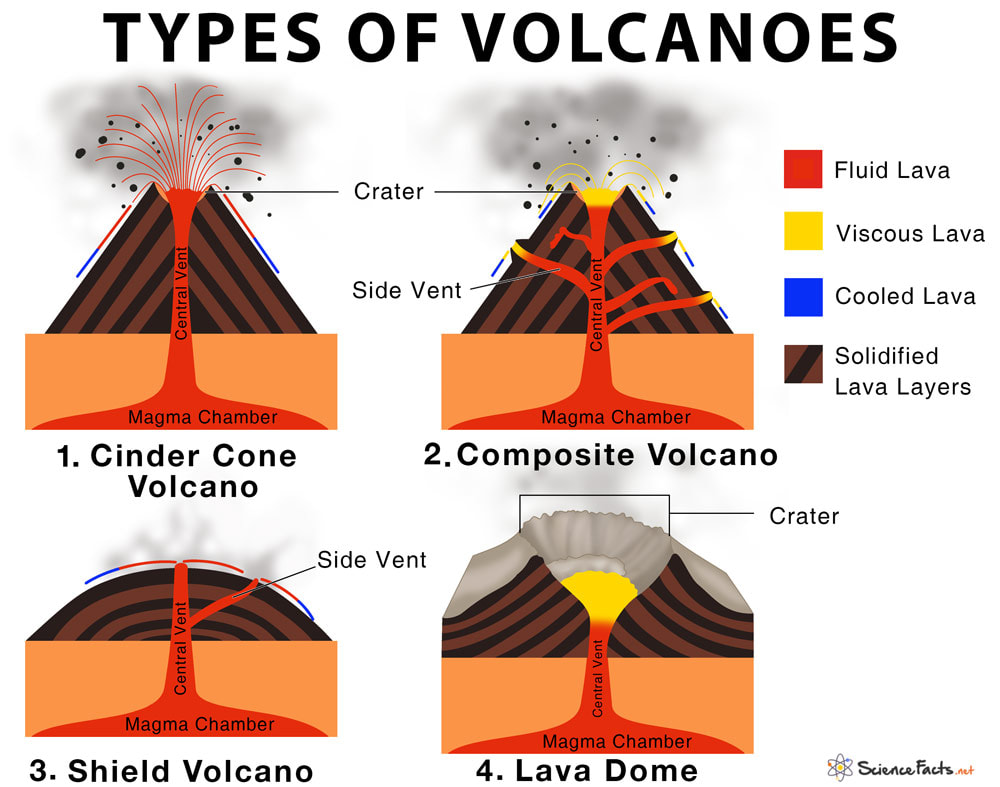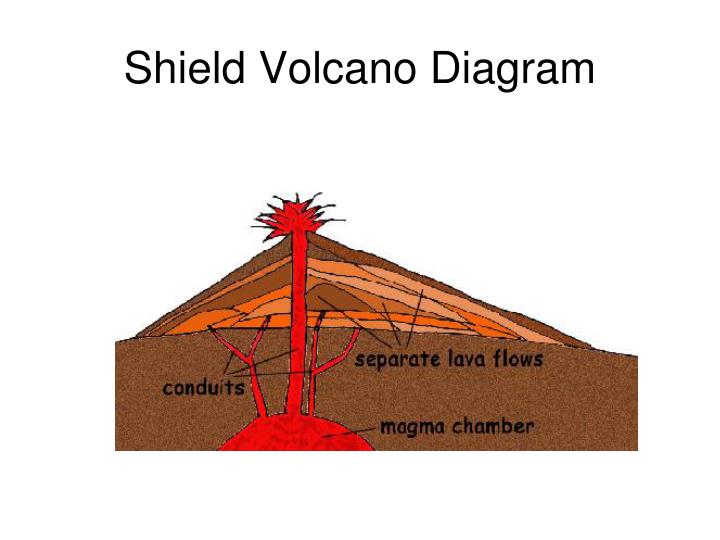

is Mount Rainier in Washington State with a summit elevation of 14,410 feet. Ojos del Salado in Chile is the tallest composite volcano on Earth with a summit elevation (height above sea level) of 22,615 feet the tallest in the U.S. Some composite volcanoes rise over 8,000 feet above their surroundings, but they reach much higher elevations when compared to the level of the sea (called above sea level). They are usually tall with steep even sides and are made out of repeating layers of lava flows, volcanic ash, cinders, blocks, and volcanic bombs. Some of the Earth's grandest mountains are composite volcanoes-sometimes called stratovolcanoes. When looking at a map, you will find that thousands of cinder cones exist in western North America and in other volcanic areas of the world.

If eruptions of cinder and lava flows happen repeatedly from the same vent, the overlapping layers can form a composite volcano (stratovolcano). When you climb a cinder cone you can usually find the bowl-shaped crater marking the location of the vent. Eruptions that form cinder cones also feed lava flows that spread outward from the eruptive vent. If the wind is blowing during the eruption, cinder is carried downwind before it's deposited into an oval shape. They accumulate as a small cinder cone that can be as high as a thousand feet above the surrounding ground. The rocks cool quickly in the air and fall to the earth to break into small pieces of bubbly cinder that pile up around the vent. Then, a powerful blast throws molten rocks, ash, and gas into the air.

The ground shakes as magma rises from within the Earth. They are made of small pieces of solid lava, called cinder, that are erupted from a vent. SP Crater and lava flow (dark area to right of cinder cone) in the northern part of San Francisco Volcanic Field, Arizona.Ĭinder cones are the simplest type of volcano.

What are the main types of volcanoes? Cinder Cone See the Eruption, Earthquakes, and Emissions around the world since 1960. Many of these are located around the Pacific Ocean in what is known as the "Ring of Fire." In the U.S., volcanoes along the west coast and in Alaska (Aleutian volcanic chain) are part of the Ring of Fire, while Yellowstone and Hawaiian volcanoes form over a "hot spot." About 500 of these have erupted in the past 100 years. There are about 1,350 potentially active volcanoes worldwide, not counting the volcanoes under the oceans. It has been erupting almost nonstop since 1983! Kīlauea volcano on the Island of Hawai‘i is one of the most active volcanoes on Earth. The rest of the volcanoes are located throughout the American West, and in Hawaii (see our volcano activity map for their locations). Most of these volcanoes are located in Alaska, a state where eruptions occur almost every year. Some of these are erupting now and others could erupt at some point in the future. USGS scientists monitor over 160 active and potentially active volcanoes in the United States. Central summit, the highest point on the mountain at just over 7,100 ft (2,165 m) rises on the background skyline, 7 km southwest of North Summit. If so, an eruption begins.Įast Summit is on the left skyline, and North Summit, to its right, is topped by an ice-filled crater from which a blocky dacite lava flow extends 1 km toward the camera. It is driven towards Earth's surface by buoyancy, it is lighter than the surrounding rock, and by pressure from gas within it. Magma forces its way upward and may ultimately break though weak areas in the Earth's crust. Originating many tens of miles beneath the ground, magma is lighter than surrounding solid rock. After cooling, liquid magma may form crystals of various minerals until it becomes completely solid and forms an igneous or magmatic rock. The molten rock is made of the chemicals oxygen, silicon, aluminum, iron, magnesium, calcium, sodium, potassium, titanium, and manganese. Molten rock below the surface of the Earth that rises in volcanic vents is known as magma, but after it erupts from a volcano it is called lava. Magma is made of molten rock, crystals, and dissolved gas-imagine an unopened bottle of soda with grains of sand inside. Illustration of the basic process of magma formation, movement to the surface, and eruption through a volcanic vent.


 0 kommentar(er)
0 kommentar(er)
